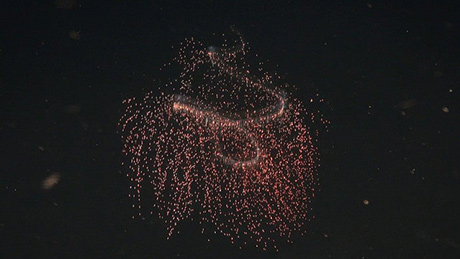Dave’s friends would never believe he went to more than 200 feet — he had even borrowed a computer so he could prove it. He was thinking about that and smiling right up until he took a breath from his regulator and there was nothing there.
What's Happening at Discovery Diving
Get all the latest info from our Instructors and Staff on our SCUBA Classes, Charters, Equipment and Special Events.

Wrecks
- Subscribe to this category
- Subscribe via RSS
- 267 posts in this category
The mantis shrimp is able to repeatedly pummel the shells of prey using a hammer-like appendage that can withstand rapid-fire blows by neutralizing certain frequencies of "shear waves," according to a new research paper by University of California, Riverside and Purdue University engineers.
The mantis shrimp is able to repeatedly pummel the shells of prey using a hammer-like appendage that can withstand rapid-fire blows by neutralizing certain frequencies of "shear waves," according to a new research paper by University of California, Riverside and Purdue University engineers.
Sick and dying starfish (sea stars) have appeared in a multitude of locations between Alaska and southern California.
“It’s like a zombie wasteland,†says biologist Emily Tucker told Nature. “You’ll see detached arms crawling away from their body.â€
Called Sea Star Wasting Disease, it can cause the death of an infected starfish in just a few days. Its effects can be devastating on starfish populations.
The disease has hit before, in southern California in 1983-1984 for example and again in 1997-98. These events were associated with warmer sea temperatures. The current outbreak is more widespread.
It is particularly worrying because one of the starfish affected, Pisaster ochraceus, was the original “keystone speciesâ€. This is a species that has a disproportionately large effect on its environment relative to its abundance. Without it the ecosystem would be dramatically different. The concept was first proposed in 1969 using Pisaster ochraceus as a primary example. Within a year of Pisaster ochraceus being removed, biodiversity halved.
Lesions on the animal are the first signs of the disease. Tissue then decays around the lesions which leads to break up of the body and death.
There is a map of where diseased sea-stars have been found at http://data.piscoweb.org/marine1/seastardisease.html
Armed dolphins, trained by the US military to shoot terrorists and pinpoint spies underwater, may be missing in the Gulf of Mexico as a result of hurricane Katrina. Experts who have studied the US navy’s cetacean training exercises claim the 36 mammals could be carrying ‘toxic dart’ guns. Divers and surfers risk attack, they claim, from a species considered to be among the planet’s smartest. The US navy admits it has been training dolphins for military purposes, but has refused to confirm that any are missing.
Dolphins have been trained in attack-and-kill missions since the Cold War. The US Atlantic bottlenose dolphins have apparently been taught to shoot terrorists attacking military vessels. Their coastal compound was breached during the storm, sweeping them out to sea. But those who have studied the controversial use of dolphins in the US defence programme claim it is vital they are caught quickly.
Leo Sheridan, 72, a respected accident investigator who has worked for government and industry, said he had received intelligence from sources close to the US government’s marine fisheries service confirming dolphins had escaped.
‘My concern is that they have learnt to shoot at divers in wetsuits who have simulated terrorists in exercises. If divers or windsurfers are mistaken for a spy or suicide bomber and if equipped with special harnesses carrying toxic darts, they could fire,’ he said. ‘The darts are designed to put the target to sleep so they can be interrogated later, but what happens if the victim is not found for hours?’


